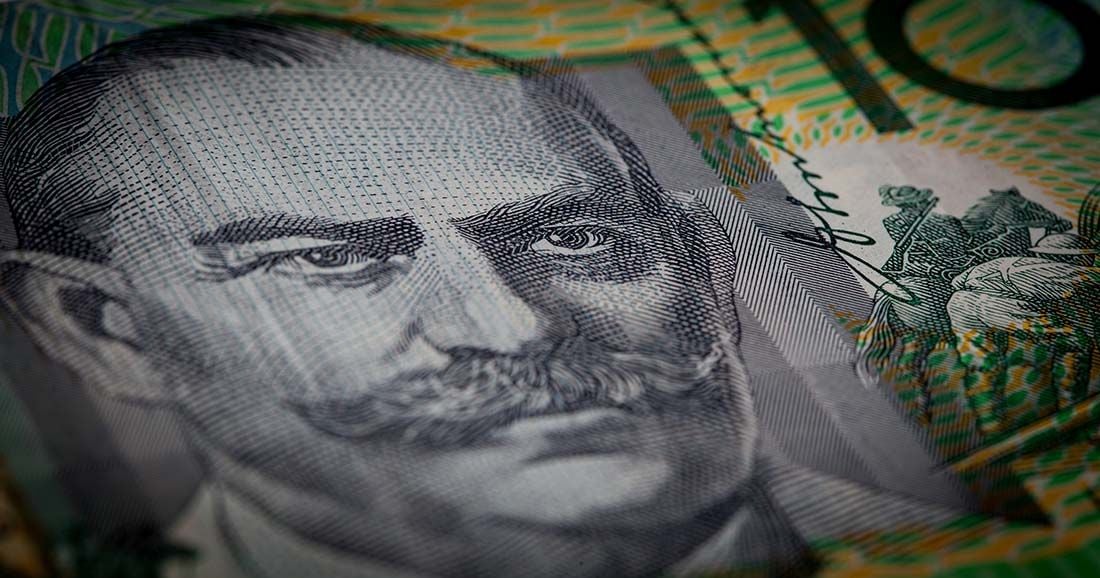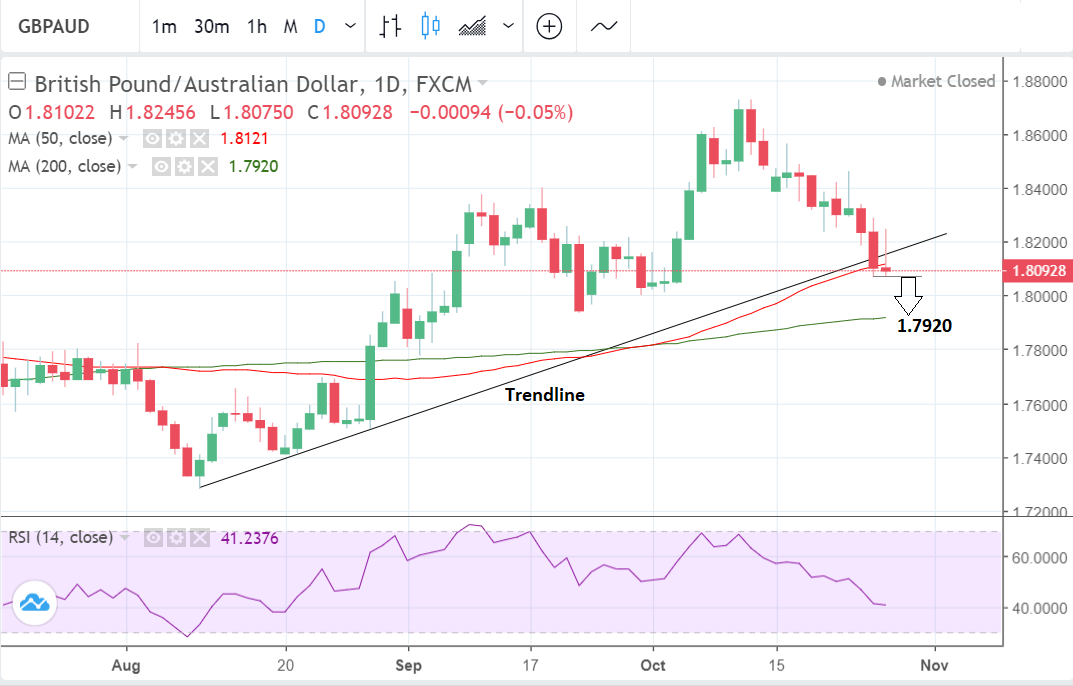The Pound is Caught in the Australian Dollar's Headlights

© Greg Brave, Adobe Stock
- GBP/AUD is at a make-or-break level.
- Pair is testing a tough level of support.
- GBP eyes BoE, CPI in focus for AUD.
Sterling has fallen to a 'make-or-break' level against the Australian Dollar that will be decisive for the market's trajectory during the weeks ahead.
GBP/AUD has been falling for two weeks almost due to a loss of momentum in the Brexit negotiations. It has now fallen to strong support comprised of the trendline from August lows and the 50-day moving average (MA).

Above: Pound-to-Australian-Dollar rate shown at daily intervals.
A clear break below this hard floor, would be confirmed by a move below 1.8050, would open the door to a move down toward 1.7920 and the 200-day moving average.
Given the strength of support at the current level however, there is also some chance of a rebound this week although the bears do have the advantage.
The relative strength index (RSI) momentum indicator is the level it was in August when the exchange rate was lower than it is now, suggesting the market may have pent-up downside to release.
Advertisement
Bank-beating GBP/AUD exchange rates: Get up to 5% more foreign exchange by using a specialist provider to get closer to the real market rate and avoid the gaping spreads charged by your bank when providing currency. Learn more here
The Pound: What to Watch
The budget statement on Monday at 13.30 is an event that could impact the Pound during the week ahead.
Economic growth forecasts and government spending plans will have an impact on both bond and currency markets but we are told that Chancellor Philip Hammond will likely play a neutral hand as he awaits the outcome to Brexit negotiations before delivering a fundamental shift in direction.
The impact on Sterling is likely to be neutral.
The main in the week ahead for the Pound is the Bank of England (BOE) interest rate announcement and quarterly inflation report, due on Thursday, 01 November at 13:00.
The BoE is not expected to change its interest rate so markets will focus on the contents of the inflation report and commentary from governor Mark Carney in order to gauge when the bank's next likely move on interest rates will come.
If the BoE's forecasts still show inflation remaining above its target in 2021 then Sterling may find support because markets would infer that the bank remains on course to keep raising interest rates over coming quarters.
Inflation rose to 2.7% in August, from 2.4%, when markets had looked for it to rise to only 2.5%. The recent rise in wages could also factor in the the BoE's forecasts, as that also supports expectations of higher inflation ahead.
Brexit remains the great unknown that might prevent the BoE from revealing its hand too much but assuming the government can agree to a transition period after March, the BOE is likely to raise interest rates again in May 2019 according to ING Group.
"If a majority of MPs approve the agreement in the Parliamentary vote (despite all the current bluster), then the UK will leave the EU on time in March and the transition phase will commence. This somewhat smoother outcome would keep the door open to a May rate hike," says James Knightley, an economist at ING.
Analysts at broker XM.com say the BOE will probably use Thursday's meeting to reiterate its forward guidance for 1-2 rate hikes per year over the next few years.
"It’s less probable that the BoE will modify its guidance of 1-2 rate increases per year over the next few years. The pound could firm slightly if Governor Mark Carney stresses in his press conference that the risks to inflation remain to the upside," says XM.com.
UK Manufacturing and Construction PMI's are also due out in the week ahead, with both likely to impact expectations for fourth-quarter economic growth. The manufacturing PMI is expected to fall to 53.0 for October, from 53.8 previously. The construction PMI is seen declining from 52.1 to 52.0.
The Australian Dollar: What to Watch
The main release for the Australian Dollar in the week ahead is third-quarter inflation data, which is expected to show the consumer price index rising at a 1.9% annualised rate when it is published on Wednesday, 31 October at 1.30 GMT.
If inflation comes out even lower than expected then it could weigh on the Aussie Dollar because it would likely delay the point when the Reserve Bank of Australia (RBA) next raises interest rates.
Another key release for the Aussie Dollar in the week ahead is the latest retail sales figure, which is expected to show a 0.3% rise in spending when it is released on Friday at 01.30 London time. Higher retail sales reflect more confident consumers and are usually associated with a stronger currency too.
The housing market is also a key economic issue in Australia and next week sees the release of new home sales and building approvals data for September, due at 01.00 and 01.30 on Monday and Tuesday respectively.
Advertisement
Bank-beating exchange rates! Get up to 5% more foreign exchange by using a specialist provider to get closer to the real market rate and avoid the gaping spreads charged by your bank when providing currency. Learn more here




